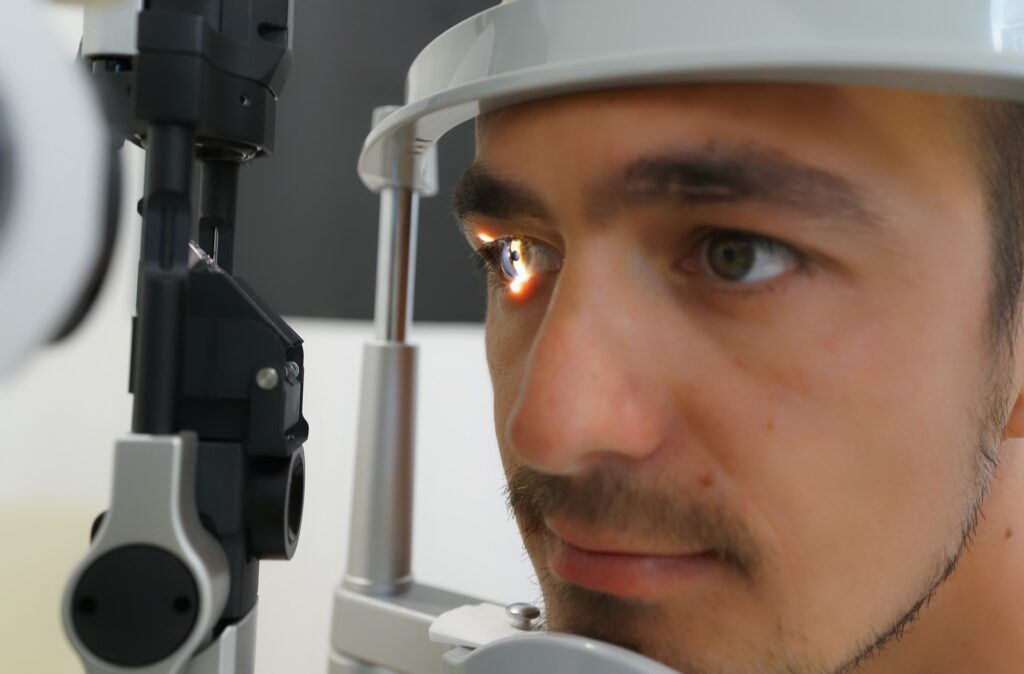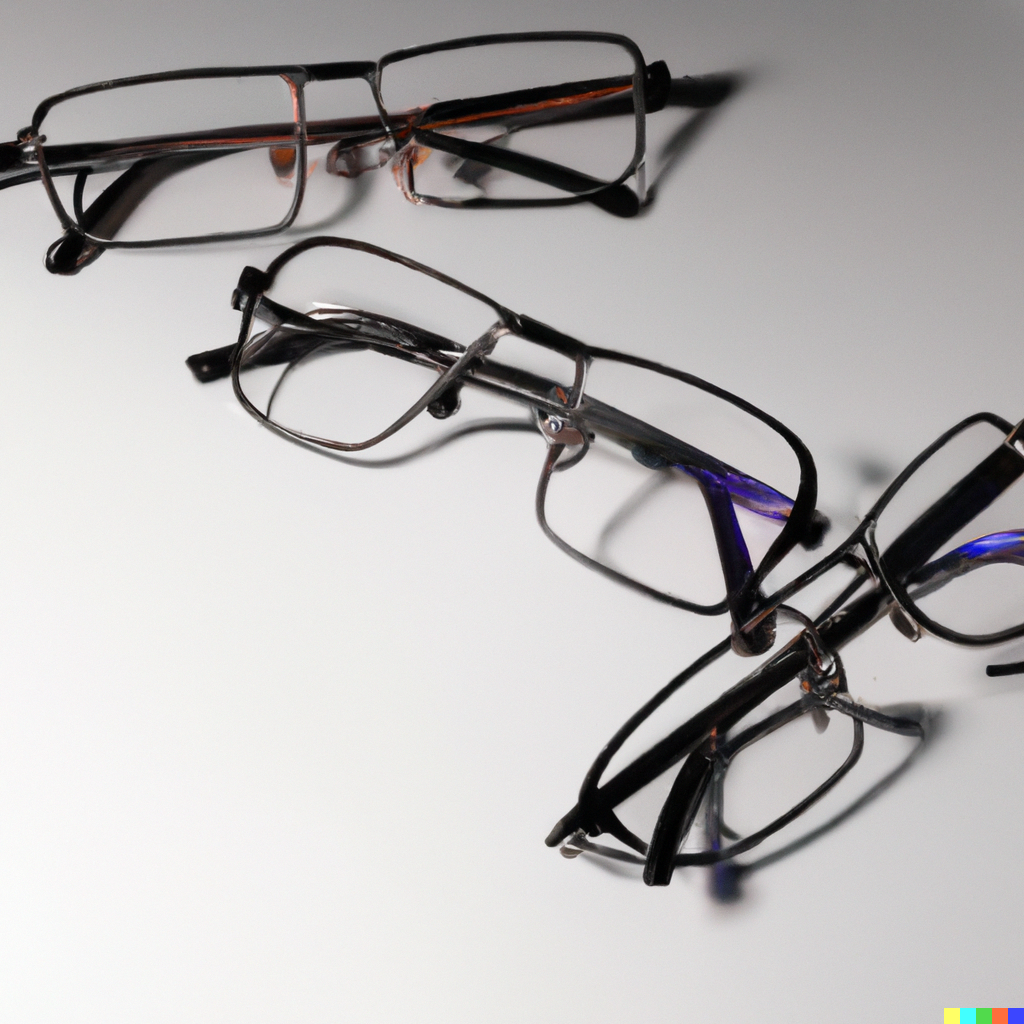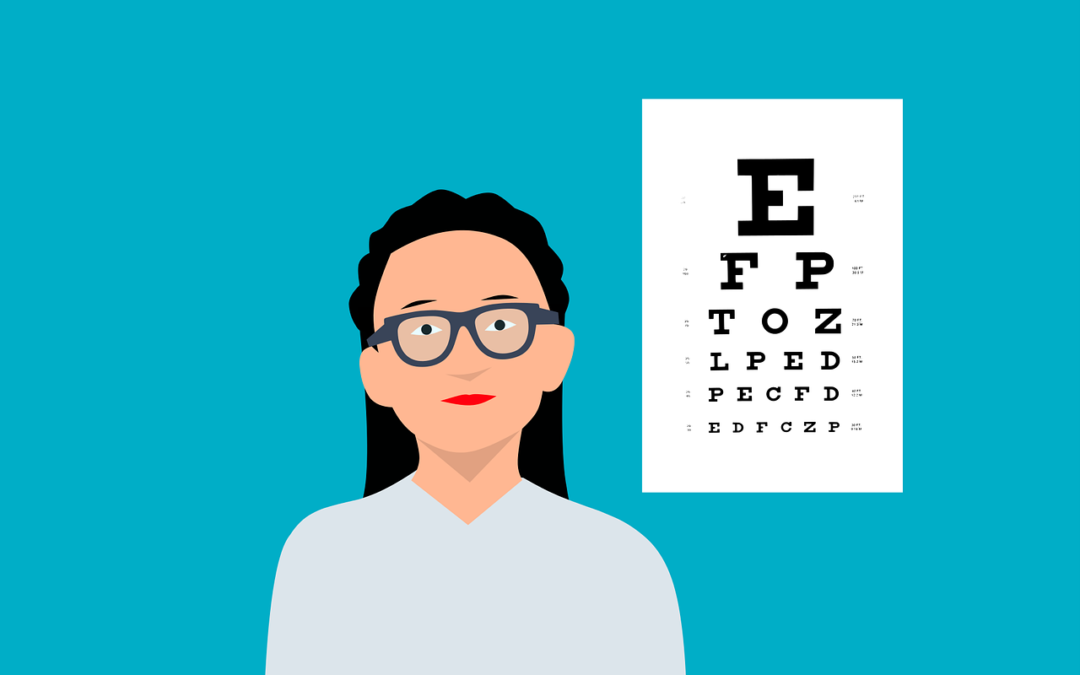Astigmatism is a common eye condition that affects many people. It occurs when the shape of the cornea or lens is irregular, causing distorted vision. Astigmatism can cause blurred or fuzzy vision at any distance, making it difficult to see clearly. However, the good news is that this condition is very treatable with the right tools and care.
What causes Astigmatism?
Astigmatism occurs when the cornea (the clear front surface of the eye) or the lens inside the eye has an irregular shape, causing light rays to focus unevenly on the retina at the back of the eye. This can result in blurry or distorted vision at any distance.
The specific causes of astigmatism are not always clear, but several factors are known to contribute to its development, including:
- Genetics: Astigmatism can run in families, and people with a family history of this condition are more likely to develop it themselves.
- Eye injuries: Injuries or trauma to the eye can cause changes in the shape of the cornea or lens, leading to astigmatism.
- Eye surgery: Certain types of eye surgery, such as cataract surgery, can cause astigmatism as a side effect.
- Keratoconus: This progressive eye disease causes the cornea to be thin and bulge into a cone-like shape, resulting in astigmatism.
- Age-related changes: As we age, changes in the shape and flexibility of the lens inside the eye can cause astigmatism and other vision problems.
- Corneal scarring: Scarring of the cornea due to injury, infection, or disease can cause astigmatism.
It’s important to note that astigmatism can also occur in combination with other vision problems, such as nearsightedness (myopia) or farsightedness (hyperopia).
What are the symptoms of Astigmatism?
The symptoms of astigmatism can vary from person to person and can range from mild to severe. Some people may not even be aware they have astigmatism until they undergo a comprehensive eye exam. However, some common symptoms of astigmatism include the following:
- Blurred or distorted vision: This is the most common symptom of astigmatism. People with astigmatism may have difficulty seeing objects clearly at any distance.
- Headaches: Straining the eyes to compensate for blurred or distorted vision can lead to frequent headaches.
- Eye fatigue: Squinting or straining the eyes to see clearly can cause eye fatigue or discomfort, especially after prolonged reading, computer work or other close activities.
- Difficulty seeing at night: Astigmatism can make it difficult to see objects in low light conditions, such as driving at night.
- Double vision: In some cases, astigmatism may cause double vision, where one image appears as two overlapping or adjacent images.
- Eye strain: Astigmatism can cause eyestrain or tired eyes, especially after prolonged activities that require a lot of visual efforts, such as reading, driving or using digital devices.
Diagnosing and treating astigmatism can help you achieve clear and comfortable vision, and reduce the risk of further eye problems.
If you are experiencing any of these symptoms, book an appointment to see our in-house opticians.
How to diagnose Astigmatism?
Astigmatism is typically diagnosed during a comprehensive eye exam with an optometrist or ophthalmologist. The exam may include several tests to evaluate the shape and function of the eyes, including:
- Visual acuity test: This test measures how well you can see letters on an eye chart from a distance.
- Refraction test: This test measures the way your eyes bend or refract light and helps determine your prescription for corrective lenses.
- Keratometry: This test measures the curvature of the cornea, the clear front surface of the eye, using a special instrument called a keratometer.
- Corneal topography: This test maps the surface of the cornea using computerized imaging technology.
- Retinal exam: This test examines the retina, the light-sensitive tissue at the back of the eye, to ensure it is healthy.
If you have symptoms of astigmatism or a family history of the condition, your optician may perform additional tests to evaluate the shape and function of your eyes.
Once a diagnosis of astigmatism is made, your optician will work with you to develop a treatment plan that may include corrective lenses, such as glasses or contact lenses, or refractive surgery, depending on the severity of your condition and your personal preferences.
It is recommended that adults undergo a comprehensive eye exam at least once every two years, while children and people with certain health conditions may require more frequent eye exams. Regular eye exams can help detect and treat astigmatism and other eye problems early, preventing complications and preserving your vision.

Can I prevent Astigmatism?
Unfortunately, there is no known way to prevent astigmatism, as it is often a result of the natural shape and growth of the eye. However, there are some steps you can take to reduce your risk of developing other eye problems that may contribute to astigmatism, including:
- Get regular eye exams: Regular eye exams can help detect and treat eye problems early, preventing complications and preserving your vision.
- Protect your eyes: Wear protective eyewear when engaging in activities that could cause eye injuries, such as sports or home repairs.
- Practice good eye hygiene: Wash your hands before touching your eyes, and avoid sharing eye makeup or contact lenses to reduce the risk of eye infections.
- Maintain a healthy lifestyle: Eating a healthy diet rich in fruits and vegetables, getting enough sleep, and managing chronic health conditions can help maintain overall eye health.
- Take breaks from digital devices: Long hours of staring at a computer or smartphone screen can cause eyestrain and dry eyes, which may worsen astigmatism symptoms.
While these steps may not prevent astigmatism, they can help maintain good eye health and reduce the risk of other eye problems that could contribute to astigmatism or other vision problems.
How do I treat Astigmatism?
The treatment for astigmatism depends on the severity of the condition and the preferences of the individual. Mild astigmatism may not require treatment, while more severe cases may require corrective lenses or surgery. Here are some common treatments for astigmatism:
- Glasses: Prescription eyeglasses with cylindrical lenses can be used to correct astigmatism. These lenses have different curvatures in different parts of the lens, which compensate for the uneven curvature of the cornea and help focus light properly on the retina.
- Contact lenses: Toric contact lenses are designed specifically to correct astigmatism. These lenses have different powers in different parts of the lens to correct the uneven curvature of the cornea.
- Orthokeratology (Ortho-K): This is a non-surgical treatment that uses special rigid contact lenses to reshape the cornea overnight while you sleep, resulting in improved vision without the need for glasses or contacts during the day.
- Refractive surgery: In some cases, refractive surgery, such as LASIK or PRK, can be used to reshape the cornea and correct astigmatism. During these procedures, a laser is used to remove a small amount of tissue from the cornea, which changes its shape and improves vision.
It’s important to note that while glasses and contact lenses can effectively correct astigmatism, they do not cure the condition. Refractive surgery can provide a more permanent solution, but it is not always suitable for everyone and carries some risks and potential side effects.
If you have astigmatism, it’s important to discuss your treatment options with an optician. They can evaluate the severity of your condition, your personal preferences, and your overall eye health to recommend the best course of treatment for you.

In conclusion, astigmatism is a common eye condition that affects many people. While it can be frustrating to deal with, it is very treatable with the right tools and care. If you are experiencing symptoms of astigmatism, it is important to schedule an appointment with your optician as soon as possible. With the right diagnosis and treatment, you can enjoy clear, comfortable vision once again.
FAQ
Yes, some types of astigmatism can be cured using OrthoK treatment and laser eye surgery.
Corneal operations can cure high amounts.
Yes, astigmatism can be corrected using spectacle and contact lenses.
Yes, but only low amounts of astigmatism sometimes go away.
Yes, astigmatism very often gets worse.
No, astigmatism doesn’t often cause blindness. Although, large amounts of irregular astigmatism caused by keratoconus can lead to very poor vision.
Yes, astigmatism is a major cause of headaches.
Yes, astigmatism may cause slight dizziness.

